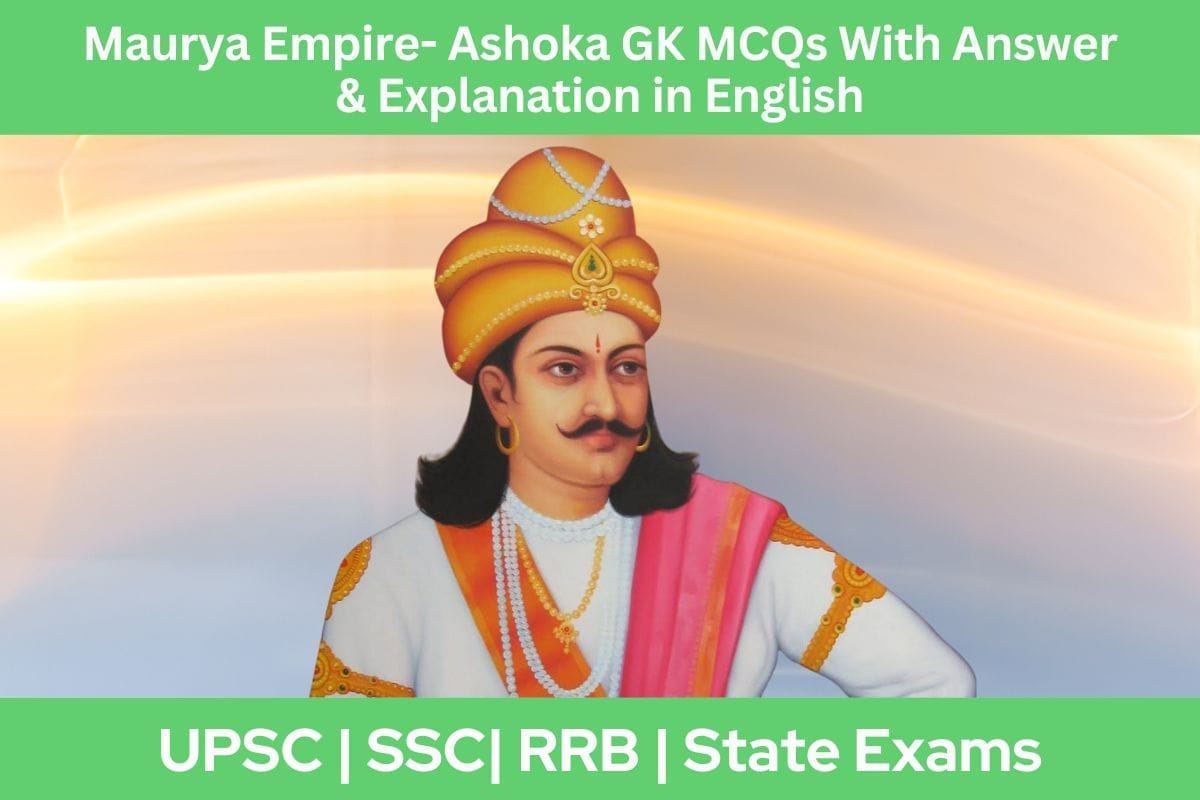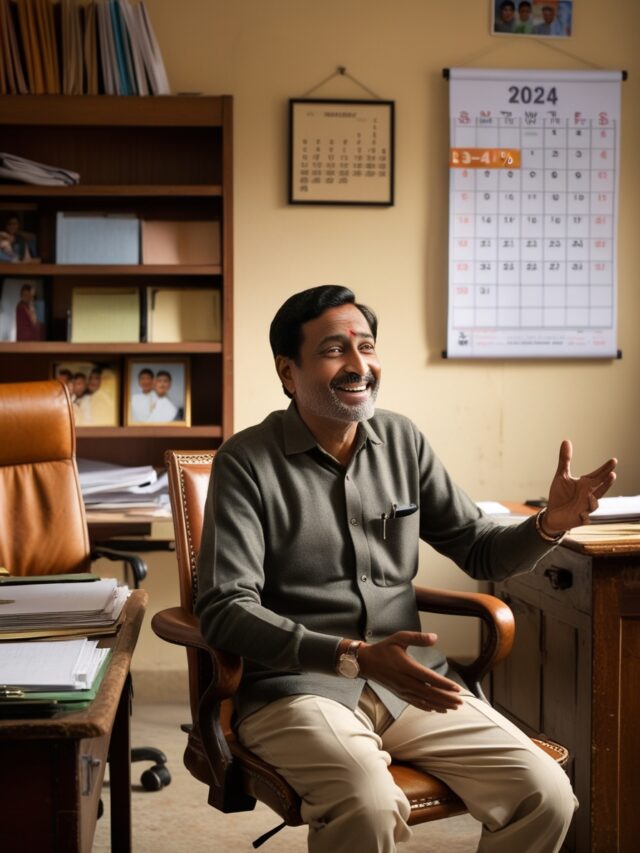
The Maurya Empire, spanning from 322 BCE to 185 BCE, was one of ancient India’s most powerful and influential dynasties. Established by Chandragupta Maurya and further expanded by his successors, the empire reached its zenith under the reign of Ashoka the Great. Known for his transformation from a fierce conqueror to a benevolent ruler after the Kalinga War, Ashoka’s legacy is marked by his advocacy of Buddhism and his edicts that preached moral and righteous governance.
10 MCQs on Maurya Empire- Ashoka :
1. As per Ashoka’s inscriptions, which among the following place was declared tax-free and proclaimed only 1/8th part as taxable?
- Kushinagar
- Lumbini
- Kathmandu
- Sarnath
Show Answer
Correct Answer: Lumbini
“According to Ashoka’s inscriptions, Lumbini was declared tax-free, and only 1/8th part of the income from Lumbini was considered taxable: Ashoka’s inscriptions indicate that he exempted Lumbini, the birthplace of Gautama Buddha, from taxes. Only 1/8th part of the income from Lumbini was considered taxable, showing Ashoka’s reverence for Buddhism and important Buddhist sites.
“
2. The beneficiaries of Ashoka’s donations in the region of Barabar Hill were___?
- Buddhists
- Ajivikas
- Svetambar Jains
- Digambar Jains
Show Answer
Correct Answer: Ajivikas
Ashoka made donations to the Ajivika sect in the region of Barabar Hill, as mentioned in his inscriptions: Ashoka’s inscriptions reveal that he made donations to various religious sects, including the Ajivika sect. This demonstrates Ashoka’s religious tolerance and support for multiple belief systems during his reign.
3. In which of the following inscriptions did Ashoka make his famous declaration, “All men are my children”?
- Minor Rock Edict (Ahraura)
- Pillar Edict VII
- Lumbini Pillar Edict
- Separate Kalinga Rock Edict I
Show Answer
Correct Answer: Separate Kalinga Rock Edict I
The declaration “All men are my children” is mentioned in the Separate Kalinga Rock Edict I by Ashoka: Ashoka’s Separate Kalinga Rock Edict I contains the declaration, “All men are my children.” This edict reflects Ashoka’s remorse over the suffering caused by his conquest of Kalinga and his commitment to promoting moral values and compassion.
4. In which year did Ashoka invade Kalinga?
- 261 BC
- 235 BC
- 285 BC
- 275 BC
Show Answer
Correct Answer: 261 BC
Ashoka invaded Kalinga in the year 261 BC: Ashoka’s invasion of Kalinga occurred in 261 BC and is a significant event in his life. The brutality of the war led to his transformation towards Buddhism and the pursuit of non-violence.
5. In which rock edict did Ashoka mention “Every Human is my child…”?
- Major Rock Edict V
- Major Rock Edict IV
- Major Rock Edict VI
- Major Rock Edict VII
Show Answer
Correct Answer: Major Rock Edict V
The statement “Every Human is my child” is mentioned in the Major Rock Edict V by Ashoka: Ashoka’s Major Rock Edict V contains the statement, “Every Human is my child.” In this edict, Ashoka expresses his concern for the welfare of all people and emphasizes his role as a fatherly figure to his subjects.
6. Which Ashokan inscription mentions five contemporary Hellenic Kings?
- Major Rock Edict XI
- Major Rock Edict XII
- Major Rock Edict X
- Major Rock Edict XIII
Show Answer
Correct Answer: Major Rock Edict XIII
The Major Rock Edict XIII of Ashoka’s inscription mentions the names of Greek Kings such as Antiochus, Ptolemy, Antigonus, Magas, as well as southern Indian rulers and other tribes: This edict provides evidence of Ashoka’s interactions with Greek rulers and various Indian tribes. It highlights the scope of his empire and diplomatic relations.
7. Which rock edict gives information about Ashoka’s conversion to Buddhism?
- Bhabru rock edict
- Kalinga rock edict
- Tarai rock edict
- Barabar cave rock edict
Show Answer
Correct Answer: Bhabru rock edict
The Bhabru rock edict provides information about Ashoka’s conversion to Buddhism. It mentions his faith in Buddha, Sangha, and Dhamma: The Bhabru Rock Edict is one of Ashoka’s inscriptions that details his conversion to Buddhism and his commitment to Buddhist principles, such as faith in the Buddha, the Sangha (monastic community), and the Dhamma (teachings).
8. Which rock edict of Ashoka mentions the purpose of the rock edicts?
- Major Rock Edict XIV
- Major Rock Edict XV
- Major Rock Edict XI
- Major Rock Edict XIII
Show Answer
Correct Answer: Major Rock Edict XIV
The Major Rock Edict XIV describes the purpose of the rock edicts, which were meant to promote Dhamma and moral conduct: Major Rock Edict XIV elaborates on the purpose of Ashoka’s rock edicts. They were primarily aimed at promoting Dhamma (moral righteousness) and encouraging moral conduct among the people.
9. Which Ashokan pillar edict provides a list of animals and birds killing of which was prohibited?
- Pillar edict V
- Pillar edict VIII
- Pillar edict XII
- Pillar edict X
Show Answer
Correct Answer: Pillar edict V
A list of animals and birds which should not be killed on some days, and another list of animals which have not to be killed at all occasions. Describes the release of 25 prisoners by Asoka: Ashoka’s inscriptions include lists of animals and birds that should not be killed on specific days or occasions, reflecting his commitment to animal welfare. Additionally, the edict mentions the release of 25 prisoners, highlighting his leniency and reformative measures.
10. According to the Sri Lankan chronicle Mahavamasa, Mauryan Emperor Ashoka converted to Buddhism by whose influence?
- Moggaliputa Tissa
- Tivara
- Karuvaki
- Nigrodha
Show Answer
Correct Answer: Nigrodha
According to the Sri Lankan chronicle Mahavamasa, Mauryan Emperor Ashoka was converted to Buddhism by the influence of Nigrodha: The Mahavamasa, a Sri Lankan Buddhist chronicle, attributes Ashoka’s conversion to Buddhism to the influence of a Buddhist monk named Nigrodha. This narrative is one of the traditional accounts of Ashoka’s embrace of Buddhism.
Maurya Empire- Ashoka Notes for UPSC Exam








